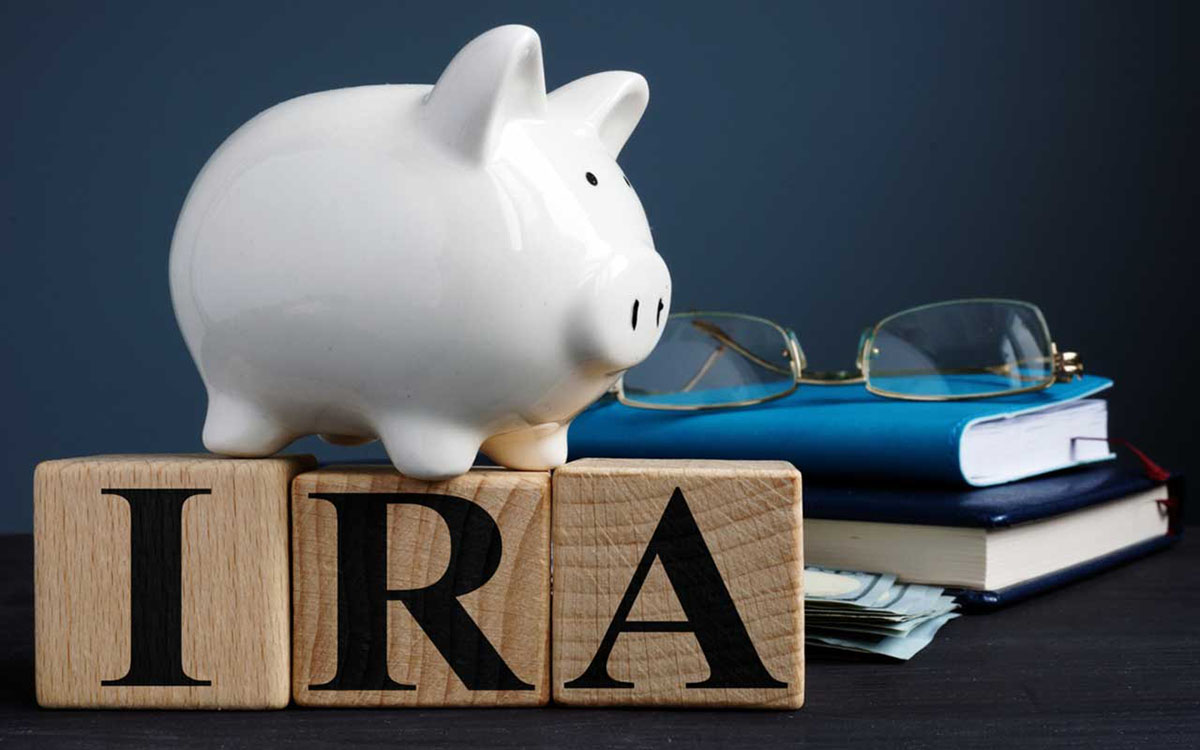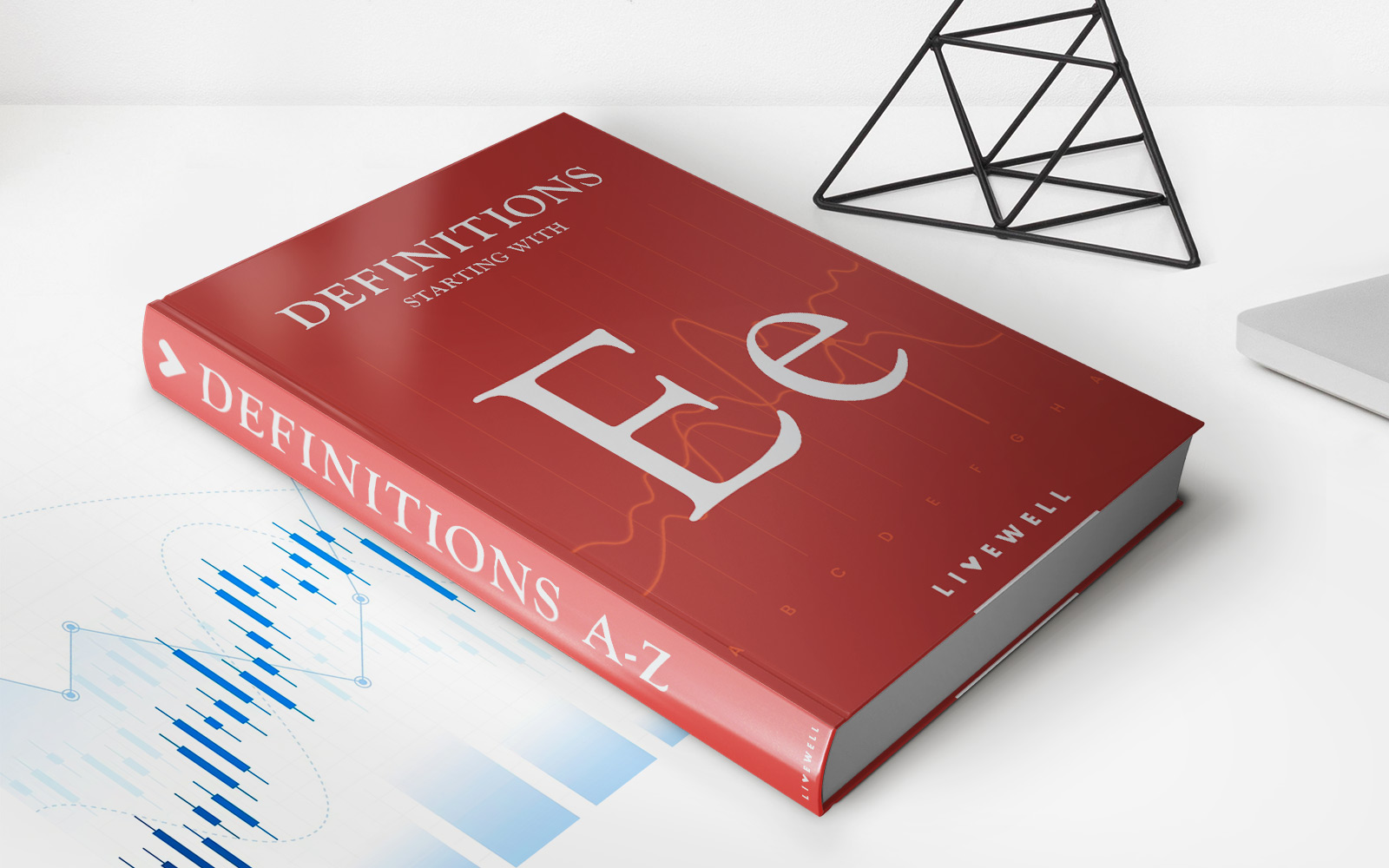

Finance
What Is An IRA Savings Account
Modified: February 21, 2024
Learn more about IRA savings accounts and how they can help you save for your financial future. Understand the benefits and features of these accounts and make informed decisions about your finances.
(Many of the links in this article redirect to a specific reviewed product. Your purchase of these products through affiliate links helps to generate commission for LiveWell, at no extra cost. Learn more)
Table of Contents
- Introduction
- Definition of an IRA Savings Account
- How Does an IRA Savings Account Work?
- Contribution Limits for an IRA Savings Account
- Advantages of an IRA Savings Account
- Disadvantages of an IRA Savings Account
- Types of IRA Savings Accounts
- Choosing the Right IRA Savings Account
- How to Open an IRA Savings Account
- Managing and Monitoring an IRA Savings Account
- Frequently Asked Questions about IRA Savings Accounts
- Conclusion
Introduction
An Individual Retirement Account (IRA) is a type of savings account specifically designed to help individuals save for their retirement. Within the realm of IRAs, there are various options available, including traditional IRAs, Roth IRAs, and Simplified Employee Pension (SEP) IRAs. While each type of IRA has its own unique features and benefits, in this article, we will be focusing on IRA savings accounts.
An IRA savings account is a conservative and low-risk investment option that allows individuals to save money for their retirement while earning interest on their deposits. Unlike other types of IRAs, such as traditional or Roth IRAs, an IRA savings account does not involve investing in stocks, bonds, or mutual funds. Instead, it functions more like a traditional savings account offered by banks or credit unions.
The primary goal of an IRA savings account is to provide a secure and stable avenue for individuals to set aside funds for their retirement years. It offers individuals a measure of financial stability and peace of mind knowing that their retirement savings are protected from market fluctuations and potential loss.
In this comprehensive guide, we will delve into the world of IRA savings accounts, exploring the definition, working mechanism, contribution limits, advantages, and disadvantages. We will also discuss the different types of IRA savings accounts available and provide insights on how to choose the right one for your needs. Additionally, we will cover the process of opening an IRA savings account and provide tips on managing and monitoring your account effectively.
Whether you are a novice seeking to understand the fundamentals or a seasoned investor exploring new avenues for retirement savings, this article will serve as your go-to resource for all things related to IRA savings accounts.
Definition of an IRA Savings Account
An IRA savings account is a type of retirement savings vehicle that offers individuals a simple and secure way to save money for their future. It operates similar to a traditional savings account, with the added benefit of providing tax advantages specifically designed for retirement savings.
With an IRA savings account, individuals can contribute a certain amount of their income each year, up to the maximum contribution limit set by the Internal Revenue Service (IRS). These contributions are made with after-tax dollars, meaning individuals have already paid taxes on the money they deposit into the account.
One key feature of an IRA savings account is the opportunity for the funds to earn interest on a tax-deferred basis. This means that individuals do not have to pay taxes on the interest earned until they start making withdrawals from the account during retirement. This tax-deferred growth allows the savings to accumulate and compound over time, potentially resulting in a larger nest egg for retirement.
It’s important to note that the interest rates offered by IRA savings accounts are typically lower than those offered by other investment options, such as stocks or mutual funds. This is because IRA savings accounts prioritize stability and security over higher returns. As a result, IRA savings accounts are considered a conservative and low-risk investment choice.
Another key aspect of an IRA savings account is the eligibility requirements. To open and contribute to an IRA savings account, individuals must have earned income from employment or self-employment. There are also age restrictions associated with IRA accounts, with the ability to contribute to traditional IRA accounts ceasing at age 70 ½, while Roth IRA accounts do not have age restrictions.
Lastly, it’s essential to mention that IRA savings accounts come with certain rules and regulations. For example, there are penalties for early withdrawals before the age of 59 ½ (with some exceptions), required minimum distributions (RMDs) that must be taken starting at age 72 with traditional IRA accounts, and contribution limits that may change over time.
In summary, an IRA savings account is a retirement savings instrument that offers individuals a secure and controlled way to save for their future. It provides tax advantages, allows for tax-deferred growth, and operates similarly to a traditional savings account while adhering to specific eligibility requirements and regulations imposed by the IRS.
How Does an IRA Savings Account Work?
An IRA savings account works by allowing individuals to contribute a portion of their income to a dedicated savings account specifically intended for retirement. The funds deposited into an IRA savings account are typically held by a financial institution, such as a bank or credit union.
Here is a step-by-step breakdown of how an IRA savings account operates:
- Eligibility and Account Setup: To open an IRA savings account, individuals must meet certain eligibility requirements, such as having earned income and being under a certain age limit (typically under 70 ½ for traditional IRA accounts). They can choose to establish an IRA savings account with a financial institution of their choice.
- Contributions: Once the IRA savings account is set up, individuals can begin making contributions to the account. Contributions can be made on a regular basis or as a lump sum, subject to the annual contribution limits set by the IRS. It’s important to note that contributions to traditional IRA accounts may be tax-deductible, while contributions to Roth IRA accounts are made with after-tax dollars.
- Tax-Advantaged Growth: One of the key benefits of an IRA savings account is the ability for the funds to grow on a tax-advantaged basis. The interest earned on the account is tax-deferred, meaning individuals do not have to pay taxes on the growth until they begin making withdrawals during retirement. This allows the savings to compound over time, potentially resulting in significant growth.
- Investment Options: While an IRA savings account is considered a conservative investment option, individuals may still have some investment choices within the account. The specific investment options available depend on the financial institution managing the account. Common investment choices may include certificates of deposit (CDs) or money market funds.
- Withdrawals: Withdrawals from an IRA savings account are typically subject to certain rules and penalties. Individuals can start taking penalty-free withdrawals from traditional IRA accounts at age 59 ½, while Roth IRA accounts may require certain conditions to be met for tax-free withdrawals. With traditional IRA accounts, individuals are also required to start taking required minimum distributions (RMDs) at age 72.
- Monitoring and Management: It is important for individuals to actively monitor and manage their IRA savings account to ensure it aligns with their retirement goals. This includes reviewing account statements, making adjustments to contributions, and staying informed about any changes to IRS regulations or contribution limits.
Overall, an IRA savings account provides individuals with a structured and tax-advantaged approach to saving for retirement. It enables contributions, tax-deferred growth, and controlled withdrawals, all aimed at building a solid financial foundation for the future.
Contribution Limits for an IRA Savings Account
When it comes to contributing to an IRA savings account, there are specific limits set by the IRS to ensure fairness and adherence to tax laws. These contribution limits determine the maximum amount individuals can contribute to their IRA savings account each year. It is important to understand these limits to effectively plan and maximize your retirement savings.
As of 2021, the contribution limits for IRA savings accounts are as follows:
- Traditional IRA: For individuals who are under the age of 50, the contribution limit is $6,000 per year. For individuals aged 50 and older, there is an additional catch-up contribution allowed, raising the limit to $7,000 per year. It’s worth noting that with traditional IRAs, you may be able to deduct your contributions from your taxable income, subject to certain income limitations and eligibility criteria.
- Roth IRA: The contribution limits for Roth IRAs are the same as traditional IRAs – $6,000 per year for individuals under 50 and $7,000 per year for individuals aged 50 and older. However, it’s important to note that contributions to a Roth IRA are made with after-tax dollars, meaning they are not tax-deductible.
- Combined Contributions: It’s important to mention that the contribution limits mentioned above apply to the total combined contributions across all IRA accounts held by an individual. For example, if you have both a traditional IRA and a Roth IRA, your combined contributions to both accounts cannot exceed the annual limit set by the IRS.
It’s also crucial to understand that the contribution limits can change over time, as they are periodically adjusted by the IRS to account for inflation. It is recommended to stay updated with the latest IRS guidelines to ensure compliance with the current contribution limits.
Additionally, it’s worth noting that the income you earn may affect your ability to contribute to an IRA savings account. There are income limits in place for certain individuals, particularly for those who are covered by a retirement plan at work or married couples filing jointly. These income limits may affect your ability to make deductible contributions to a traditional IRA or contribute to a Roth IRA altogether.
Overall, understanding and effectively maximizing your contribution limits for an IRA savings account is crucial for optimizing your retirement savings. It is recommended to consult with a financial advisor or tax professional to ensure you are making the most of the available contribution options while staying within the IRS guidelines.
Advantages of an IRA Savings Account
An IRA savings account offers numerous advantages that make it an attractive option for individuals looking to save for retirement. Let’s explore some of the key benefits:
- Tax Advantages: One of the primary advantages of an IRA savings account is the tax benefits it provides. With a traditional IRA, contributions made may be tax-deductible, potentially reducing your taxable income for the year. Although Roth IRA contributions are made with after-tax dollars, qualified withdrawals are tax-free during retirement. These tax advantages can help individuals optimize their retirement savings and minimize their tax burden.
- Tax-Deferred Growth: Another notable advantage of an IRA savings account is the opportunity for tax-deferred growth. The interest earned on the account is not subject to annual taxation, allowing the savings to compound over time without reducing the overall account balance. This accumulation of tax-free growth can significantly increase your retirement savings.
- Security and Stability: IRA savings accounts are considered a conservative and low-risk investment option. Unlike investing in stocks or mutual funds, which may experience market volatility, an IRA savings account offers stability and security. This makes it ideal for individuals who prioritize preserving their retirement savings and are more risk-averse.
- Control and Flexibility: An IRA savings account provides individuals with control and flexibility over their retirement savings. They can choose when and how much to contribute to their account, within the limits set by the IRS. Additionally, individuals can typically select their preferred financial institution to open and manage their IRA savings account, providing a level of customization and convenience.
- Contributions for Non-Working Spouses: IRA savings accounts also offer an advantage for non-working spouses. Even if one spouse does not have earned income, they can still make contributions to an IRA savings account based on their partner’s income. This allows couples to maximize their combined retirement savings and take advantage of the tax benefits.
These advantages make an IRA savings account an appealing option for individuals seeking a secure and tax-efficient way to save for retirement. It is important to assess your individual financial situation, retirement goals, and risk tolerance to determine if an IRA savings account aligns with your needs and objectives.
Disadvantages of an IRA Savings Account
While an IRA savings account offers numerous advantages for retirement savings, it’s important to consider the potential drawbacks as well. Let’s explore some of the disadvantages associated with an IRA savings account:
- Lower Returns: One of the main disadvantages of an IRA savings account is the relatively lower returns compared to other investment options. Since IRA savings accounts are conservative and low-risk, the interest rates offered are usually lower than what can be achieved through investing in stocks, bonds, or mutual funds. While this prioritizes stability and security, it may result in slower growth of your retirement savings over time.
- Contribution Limits and Penalties: Although contribution limits ensure fairness and adherence to tax laws, they may also limit the amount individuals can save in an IRA savings account each year. If you exceed the contribution limits, you may be subject to penalties imposed by the IRS. Additionally, early withdrawals before the age of 59 ½ may result in penalties and taxes, offsetting the tax advantages of the account.
- Required Minimum Distributions (RMDs): With traditional IRA accounts, individuals are required to start taking required minimum distributions (RMDs) once they reach age 72. These distributions are generally taxable and must be taken annually. The RMDs ensure that individuals gradually withdraw and pay taxes on their retirement savings. This may restrict individuals’ ability to keep their savings invested for a longer period if they do not need the funds immediately.
- Limited Investment Options: IRA savings accounts typically offer limited investment options compared to other retirement plans or brokerage accounts. Most IRA savings accounts focus on conservative investments such as certificates of deposit (CDs) or money market funds. While this prioritizes stability, it may limit potential growth opportunities for individuals seeking higher returns from riskier investments.
- Income and Contribution Restrictions: Depending on your income and employment situation, there may be income and contribution restrictions for certain types of IRA savings accounts. For example, there are income limits for making deductible contributions to a traditional IRA if you are covered by a retirement plan at work. These restrictions may complicate your ability to fully maximize the benefits of an IRA savings account.
Considering these disadvantages, it’s important to evaluate your risk tolerance, retirement goals, and investment preferences when deciding whether an IRA savings account is the right choice for you. It may be beneficial to consult with a financial advisor who can provide personalized guidance based on your unique financial circumstances.
Types of IRA Savings Accounts
When it comes to IRA savings accounts, there are different types available to suit individuals’ specific needs and financial goals. Let’s explore some of the common types of IRA savings accounts:
- Traditional IRA: A traditional IRA savings account allows individuals to contribute pre-tax income, which may be tax-deductible. The funds in a traditional IRA grow tax-deferred until withdrawals are made during retirement, at which point they are taxed as ordinary income. Traditional IRAs are popular among individuals looking for potential tax savings during their working years.
- Roth IRA: A Roth IRA savings account is funded with after-tax dollars, meaning contributions are not tax-deductible. However, qualified withdrawals from a Roth IRA during retirement are tax-free. Roth IRAs are advantageous for individuals who anticipate being in a higher tax bracket in retirement, as they provide tax-free growth and withdrawals.
- Simplified Employee Pension (SEP) IRA: A SEP IRA is designed for self-employed individuals and small business owners. It allows employers to contribute to their own retirement accounts and those of their eligible employees. The contributions made to a SEP IRA are tax-deductible, and the earnings grow tax-deferred until withdrawals are made during retirement.
- Spousal IRA: A spousal IRA allows a working spouse to make contributions on behalf of a non-working spouse. This type of IRA enables non-working spouses to save for retirement using the working spouse’s income. It provides an opportunity for couples to maximize their retirement savings and take advantage of the tax benefits associated with IRAs.
- Inherited IRA: An inherited IRA is created when an individual inherits an IRA from a deceased spouse, parent, or non-spouse. Inherited IRAs have specific rules and regulations regarding required minimum distributions (RMDs) and taxation. The rules vary depending on the relationship between the beneficiary and the original account holder.
These are just some of the common types of IRA savings accounts available. Each type has its own unique features, benefits, and eligibility requirements. It’s important to carefully consider your financial situation, retirement goals, and tax implications when choosing the most suitable IRA savings account for your needs.
It’s worth noting that the availability of certain types of IRAs may be subject to changes in tax regulations and individual circumstances. Consulting with a financial advisor or tax professional can provide you with personalized guidance and ensure that you make informed decisions regarding your IRA savings account.
Choosing the Right IRA Savings Account
Choosing the right IRA savings account is a crucial decision that depends on various factors and individual preferences. Here are some key considerations to help you select the most suitable IRA savings account for your needs:
- Goals and Risk Tolerance: Consider your retirement goals and risk tolerance. If you prefer stability and are risk-averse, a traditional or Roth IRA savings account may be a good fit. If you are comfortable with more risk and potential higher returns, you might consider exploring other investment options, such as stocks or mutual funds within an IRA.
- Tax Considerations: Evaluate the potential tax benefits and implications of each type of IRA savings account. If you desire immediate tax deductions, a traditional IRA may be advantageous. If tax-free growth and withdrawals during retirement are a priority, a Roth IRA may be more suitable.
- Contribution Limits and Eligibility: Consider your income and the annual contribution limits set by the IRS. Different types of IRA savings accounts have different eligibility requirements and contribution limits. Ensure that you can contribute to the chosen IRA savings account based on your income level and employment status.
- Investment Options: Determine the investment options available within the IRA savings account. If you prefer a conservative approach and limited investment choices, a traditional or Roth IRA savings account with options like certificates of deposit (CDs) or money market funds may be appropriate. If you desire more diverse investment options, consider a self-directed IRA.
- Fees and Expenses: Assess the fees and expenses associated with the chosen IRA savings account. Consider factors such as account maintenance fees, transaction fees, or fees for additional services. It’s important to choose an account that aligns with your budget and offers competitive fees.
- Provider and Customer Service: Evaluate the reputation, reliability, and customer service of the financial institution offering the IRA savings account. Ensure the institution has a strong track record, good customer reviews, and excellent customer service. This will ensure a positive experience when managing your account.
By carefully considering these factors, you can find the IRA savings account that best suits your individual circumstances and helps you achieve your long-term retirement goals. It’s also advisable to seek advice from a financial advisor who can provide personalized recommendations based on your specific financial situation and objectives.
Remember, choosing the right IRA savings account is a long-term commitment, so take your time, research your options, and make an informed decision that aligns with your financial goals and preferences.
How to Open an IRA Savings Account
Opening an IRA savings account is a straightforward process that can be completed in a few simple steps. To help you get started, here is a general guide on how to open an IRA savings account:
- Research Financial Institutions: Start by researching different financial institutions that offer IRA savings accounts. Consider factors such as reputation, fees, customer service, and the investment options available within the account.
- Select the Type of IRA: Determine the type of IRA savings account that aligns with your financial goals and preferences. Assess whether a traditional IRA or a Roth IRA would be more suitable based on your tax situation and retirement objectives. Consider consulting with a financial advisor or tax professional to make an informed decision.
- Contact the Financial Institution: Once you have chosen a financial institution and the type of IRA savings account you want to open, reach out to the institution either by phone, online, or in person. Express your interest in opening an IRA savings account and inquire about their account opening procedures.
- Gather Required Documents: The financial institution will provide you with a list of necessary documentation to open the IRA savings account. Typically, you will need to provide identification, such as a driver’s license or passport, Social Security number, and proof of employment or self-employment income.
- Complete the Application: Fill out the required application form provided by the financial institution. This will include personal information, such as your name, address, date of birth, and employment details. Make sure to review the application carefully and provide accurate information.
- Designate Beneficiaries: Determine and designate beneficiaries for your IRA savings account. Beneficiaries are individuals who will inherit the funds in your account in the event of your passing. Specify their names and contact information in the appropriate section of the application.
- Submit the Application: Once you have completed the application form, submit it to the financial institution. You may need to provide it physically or electronically, depending on the preferred method of the institution. Keep a copy of the application for your records.
- Fund the Account: After the application is processed and approved, you will need to fund the IRA savings account. You can make an initial deposit either by transferring funds from an existing account or by writing a check to the financial institution. Be sure to follow the institution’s specific instructions for depositing funds.
- Manage and Monitor the Account: Once your IRA savings account is open and funded, it’s crucial to actively manage and monitor your investments. Review account statements regularly, make contributions within the IRS contribution limits, and stay informed about any changes to regulations or account policies.
Opening an IRA savings account is an important step towards building a secure financial future. Take the time to research your options, carefully complete the necessary paperwork, and ensure you understand the terms and conditions of the account. If you have any questions or concerns during the process, don’t hesitate to reach out to the financial institution for assistance.
Managing and Monitoring an IRA Savings Account
Properly managing and regularly monitoring your IRA savings account is vital to ensure your retirement savings are on track and aligned with your financial goals. Here are some key tips for effectively managing and monitoring your IRA savings account:
- Review Account Statements: Take the time to thoroughly review your IRA account statements when they are issued. Carefully examine the transactions, contributions, and overall account balance. Ensure that the information is accurate and matches your records.
- Track Contributions: Keep track of your contributions to ensure they remain within the IRS-allowed contribution limits. Regularly monitor the status of your contributions to avoid any potential penalties for excess contributions.
- Stay Informed: Stay up to date with any changes in tax laws, regulations, or policies that may affect your IRA savings account. This includes being aware of any changes to contribution limits, withdrawal rules, or tax implications. Regularly check reputable sources or consult with a financial advisor to stay informed.
- Monitor Investments: If your IRA savings account offers investment options beyond basic savings, monitor the performance of your investments. Conduct regular reviews and consider whether adjustments or rebalancing are necessary based on your risk tolerance and long-term goals.
- Make Regular Contributions: Consistently contribute to your IRA savings account within the IRS-allowed limits. Set up automatic contributions if possible to ensure regular savings. This helps to maximize the growth of your retirement funds over time.
- Reassess your Goals Periodically: Periodically reassess your retirement goals and financial situation. As life circumstances change, you may need to adjust your savings strategies or contribution amounts. Consider meeting with a financial advisor to evaluate your progress and make necessary adjustments.
- Consider Tax Planning: Understand the potential tax implications of your IRA savings account and plan accordingly. Consult with a tax professional to optimize your contributions and withdrawals from a tax perspective.
- Protect Account Information: Safeguard your IRA savings account information and regularly update your contact details with the financial institution. Be vigilant against potential fraud or identity theft and report any suspicious activity immediately.
- Regularly Revisit Beneficiary Designations: Review and update your beneficiary designations as needed, especially after major life events such as marriage, divorce, or the birth of children. Ensuring your beneficiaries are up to date helps to streamline the transfer of assets and minimize potential complications.
By implementing these strategies, you can effectively manage and monitor your IRA savings account, maximizing its potential for growth and ensuring it remains aligned with your retirement goals. Regularly reviewing your account, staying informed, and seeking professional advice when needed will help you make informed decisions and stay on track for a secure financial future.
Frequently Asked Questions about IRA Savings Accounts
1. Can I contribute to both a traditional IRA and a Roth IRA?
Yes, you can contribute to both a traditional IRA and a Roth IRA in the same tax year. However, keep in mind that your combined contributions to both accounts cannot exceed the annual contribution limits set by the IRS.
2. What happens if I exceed the annual contribution limits for an IRA savings account?
If you exceed the annual contribution limits for an IRA savings account, you may be subject to penalties imposed by the IRS. It’s important to monitor your contributions and ensure they stay within the allowed limits to avoid any potential penalties.
3. Can I withdraw money from my IRA savings account before retirement?
Yes, you can withdraw money from your IRA savings account before retirement. However, if you withdraw funds before the age of 59 ½, you may be subject to early withdrawal penalties and taxes, unless you qualify for an exception such as a qualified first-time home purchase or qualified educational expenses.
4. Are there any income limitations for contributing to an IRA savings account?
Yes, there are income limitations for contributing to an IRA savings account, specifically for Roth IRAs. The ability to make direct contributions to a Roth IRA phases out for individuals above certain income limits. However, there are no income limitations for contributing to a traditional IRA, although the deductibility of contributions may be limited based on income and participation in an employer-sponsored retirement plan.
5. Do I have to take required minimum distributions (RMDs) from my IRA savings account?
For traditional IRA accounts, you are required to start taking required minimum distributions (RMDs) once you reach the age of 72. Failure to take RMDs may result in tax penalties. Roth IRA accounts, on the other hand, are not subject to RMDs during the owner’s lifetime.
6. Can I convert my traditional IRA to a Roth IRA?
Yes, it is possible to convert a traditional IRA to a Roth IRA. This conversion involves paying taxes on the amount being converted as it moves from a tax-deferred traditional IRA to a tax-free Roth IRA. Consider consulting with a tax professional to determine if a conversion is suitable for your individual circumstances.
7. What happens to my IRA savings account if I pass away?
If you pass away, the funds in your IRA savings account will be transferred to the designated beneficiaries you have assigned. It’s important to review and update your beneficiary designations regularly to ensure your assets are distributed according to your wishes.
8. Can I contribute to an IRA savings account if I have a retirement plan through my employer?
Yes, you can contribute to an IRA savings account even if you have a retirement plan through your employer. However, the deductibility of your contributions to a traditional IRA may be limited based on your income and participation in an employer-sponsored retirement plan. Consult with a tax professional to understand the specific rules and limitations that may apply to your situation.
These are just a few common questions related to IRA savings accounts. It’s important to research and understand the specific rules and regulations governing IRA savings accounts and seek professional advice when needed to make informed decisions based on your individual circumstances.
Conclusion
IRA savings accounts are powerful tools for individuals to save for retirement and secure their financial future. Whether you choose a traditional IRA, a Roth IRA, or another type of IRA savings account, these accounts offer numerous benefits for retirement planning, including tax advantages, stable growth, and flexibility.
By understanding the various types of IRA savings accounts available, you can select the option that best aligns with your financial goals, risk tolerance, and tax situation. Consider factors such as contribution limits, investment options, and eligibility requirements when making your decision. It’s also essential to regularly review and monitor your IRA savings account, ensuring it remains on track to meet your retirement objectives.
Take advantage of the tax benefits and compounding growth opportunities offered by an IRA savings account. Maximize your contributions within the IRS limits and consider adjusting your savings strategies as needed throughout your working years.
Remember to stay informed about changes in tax laws and regulations that may impact your IRA savings account. Seek guidance from financial professionals and tax advisors for personalized advice based on your specific financial situation and retirement goals.
An IRA savings account can serve as a cornerstone of your retirement planning, providing stability, tax efficiencies, and a secure means of accumulating wealth for the future. Start early, contribute regularly, and manage your account wisely to build a nest egg that supports you during your golden years.
With proper planning and a disciplined approach to saving, your IRA savings account can help you achieve the comfortable retirement you’ve always envisioned.














